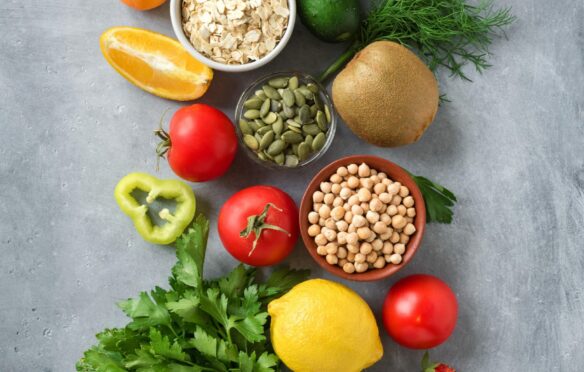
Going vegetarian or vegan is a good way to help your body and the planet but, according to research, a plant-based diet may make you more likely to break a hip.
Experts at Leeds University have said vegetarian diets, “often have lower intakes of nutrients that are linked with bone and muscle health”, after their study found that female vegetarians had a 33% increased risk of hip fracture in comparison to regular meat eaters.
The study, which involved more than 26,000 women aged 35 to 69, assessed the risk of hip fracture among vegetarians, pescatarians, and occasional meat eaters compared with those who regularly eat meat – and the elevated risk of hip fracture was only found among vegetarians.
However, a plant-based diet is often cited to have big health benefits, too.
“A whole food plant-based diet can reduce inflammatory markers and the risk of the most common chronic diseases. This way of eating promotes health and longevity by maximising healthy nutrients and minimising harmful components,” says Dr Rajiv Bajekal, a consultant orthopaedic surgeon and lifestyle medicine physician at Plant Based Health Professionals UK.
“Centering your meals around wholegrains, beans, fruit, vegetables, nuts and seeds offers mental and physical benefits both in the short and longer term.”
So, what can vegetarians and vegans do to ensure they are getting all the good stuff and giving their bones the best possible support?
Find plenty of protein
“Bones need protein to be strong and we can get high-quality protein in our food from beans, especially soya, and also foods such as quinoa, nuts and seeds,” says Bajekal. “Look for calcium-set tofu, tempeh and calcium-fortified soya milk and try to get two to three portions of these foods or other beans daily. Soya is particularly beneficial as it is a great source of protein, micronutrients and also phytoestrogens that are bone-protective. Fruit and vegetables also promote bone formation.”
Calcium is vital – especially during the menopause
At different times of our life, our bodies may need different things.
“Our maximum bone strength is at around 30 years of age, after which there is a steady fall in bone strength.
“If we build up more of a reserve before this age by being very active, we can lose more bone without the problems of osteoporosis in later life,” explains Bajekal.
“During perimenopause, one can lose as much as 3-5% of our bone mass and strength due to the loss of the protective effect of oestrogen and so it is important that women in particular think of how to get into their golden years in the best possible way to prevent this sudden loss of bone.”
To mitigate this, during the menopausal years, focus on calcium rich foods, he adds, “which can be obtained from calcium-set tofu, calcium-fortified plant milks, white beans, tahini and green leafy vegetables such as kale, boy choy, rocket and broccoli.
“Calcium losses are greater in people who smoke, consume excess amounts of coffee, alcohol or sugar-sweetened beverages, and also consume salt, usually in ultra-processed foods.”
Calcium will help people of all ages support bone health though, so it’s always worth making sure that you’re getting enough.
Focus on strength-based exercise
The exercise we do will also have an impact on our bone health.
“Walking is helpful to prevent bone loss but doesn’t increase bone strength. Walking with a weighted jacket or wrist and ankle weights helps stimulate bone formation,” says Bajekal.
“Skipping, star jumps, and training with weights helps strengthen bones and using an all-body vibration platform to do weight training helps.
“Building leg strength and doing tai chi or other balance training exercises goes a long way in preventing falls and should not be neglected. Muscle strength and bone strength go together.”
Add other essential vitamins
If you are vegetarian, it’s crucial to make sure you’re getting enough vitamin D and B12 – which Bajekal says are “essential for bone health and helping prevent falls and must be supplemented in plant-based diets”.
So get out in the sunshine and eat spinach, eggs and cheese to boost your levels of both – and consider taking a supplement, especially in the winter months.

Enjoy the convenience of having The Sunday Post delivered as a digital ePaper straight to your smartphone, tablet or computer.
Subscribe for only £5.49 a month and enjoy all the benefits of the printed paper as a digital replica.
Subscribe